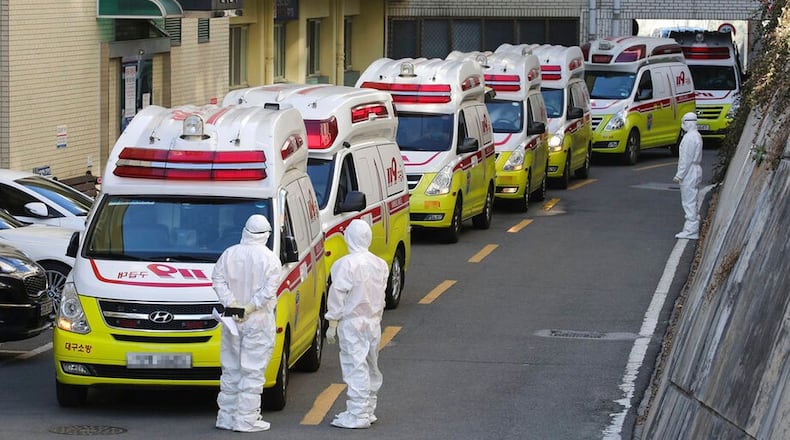The COVID-19 pandemic has exposed countries’ readiness to act in the face of the global spread of a virus. South Korea is one of them, and so far, it seems to have had positive results with its health policies fighting the virus.
Case in point: It has the lowest COVID-19 mortality rate in Asia.
For many analysts, one of the keys to South Korea’s success is its public policies, fundamentally aimed at detecting the most COVID-19 cases as quickly as possible, for which it counted on the work of private companies in charge of developing the testing kit for thousands of Koreans.
In addition, authorities’ transparency with information about the spread of the virus in the country, and a populace that is cooperating with government strategies, are other key elements that can serve as an example to other countries.
Some experts see the case of South Korea as an example to follow to detect cases of COVID-19 and minimize its spread.
» PHOTOS: Metro Atlanta adjusts to shifts in daily life amid coronavirus crisis
» DASHBOARD: Real-time stats and charts tracking coronavirus in Georgia
» MORE: Map tracks coronavirus globally in real time
» COMPLETE COVERAGE: Coronavirus in Georgia
Here are some lessons we can learn from the strategies implemented by South Korea.
1. Rapid testing
The rapid testing campaign in South Korea arose as a result of lessons learned by that country after an outbreak of Middle East respiratory syndrome (MERS) that occurred in 2015 from another type of coronavirus.
Investigations carried out to find out what mistakes were made in South Korea during the 2015 outbreak concluded that the lack of tests to detect the disease forced many infected people to travel all around cities in search of a medical center to perform the testing.
For this reason, a law was enacted in South Korea to allow the government to take immediate action to approve testing systems in the event of a health emergency, and four Korean companies were appointed to make the COVID-19 tests based on the WHO formula.
The mass production of tests, along with the establishment of 633 free testing sites scattered throughout the country, made it so that even low-income people could be tested. South Korea has been conducting more than 10,000 tests daily on its people, with the results being delivered in three days via text message.
The country has established drive-thru testing sites, and it has the highest number of people tested per capita, with close to 300,000 screening tests administered. Therefore, South Korea’s health care system can track not only the number of COVID-19 cases, but also where they are located, so that it can prevent the virus’ spread.
2. Public information about the infected
The government has publicly released information about the location of infected individuals and their movements around the country.
Although the names of infected individuals are not released, websites and smartphone applications have been created that include the geographic information of those infected. In some cases, detailed information about their movements is provided so that others who pass through those areas can be cautious.
The use of technology to make information publicly accessible in South Korea contrasts with China, whose government hid information about the outbreak in the country for multiple days.
3. Social distancing
In South Korea, social distancing measures were quickly taken. Some of these include the suspension of school and university activities, workers telecommuting, the use of face masks on public transportation, and the suspension of activities that generate crowds, such as public events.
There is also an ongoing campaign by the Korea Centers for Disease Control & Prevention urging the population to maintain hygiene habits that prevent the spread of the disease.
Media outlets have messages aimed at promoting hand washing and the use of masks, while the police monitor compliance with these guidelines in the streets of the country.
Price controls were also enacted on medical supplies such as masks. This was to prevent price gouging and to instead make them accessible to all sectors of the population, which also allowed fair distribution among the country’s residents.
Results
The death rates from COVID-19 in South Korea are the lowest in all of Asia, with a 0.99 mortality rate in detected cases. The figure contrasts with the 4.21 death rate from the virus in China, according to WHO figures.
Although there are several variables that have influenced the low mortality rates in South Korea, its early detection techniques, combined with transparent information strategies, have been the key to stopping the rapid spread of the virus.
MORE DETAILS: TAKEAWAY
This story is part of the SoJo Exchange of COVID-19 stories from the Solutions Journalism Network, a nonprofit organization dedicated to rigorous reporting about responses to social problems. Today, we examine steps taken by South Korea, which could provide some answers in how to slow down the spread of the coronavirus.
About the Author
Keep Reading
The Latest
Featured


